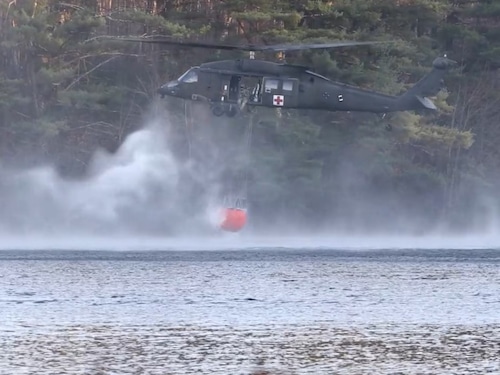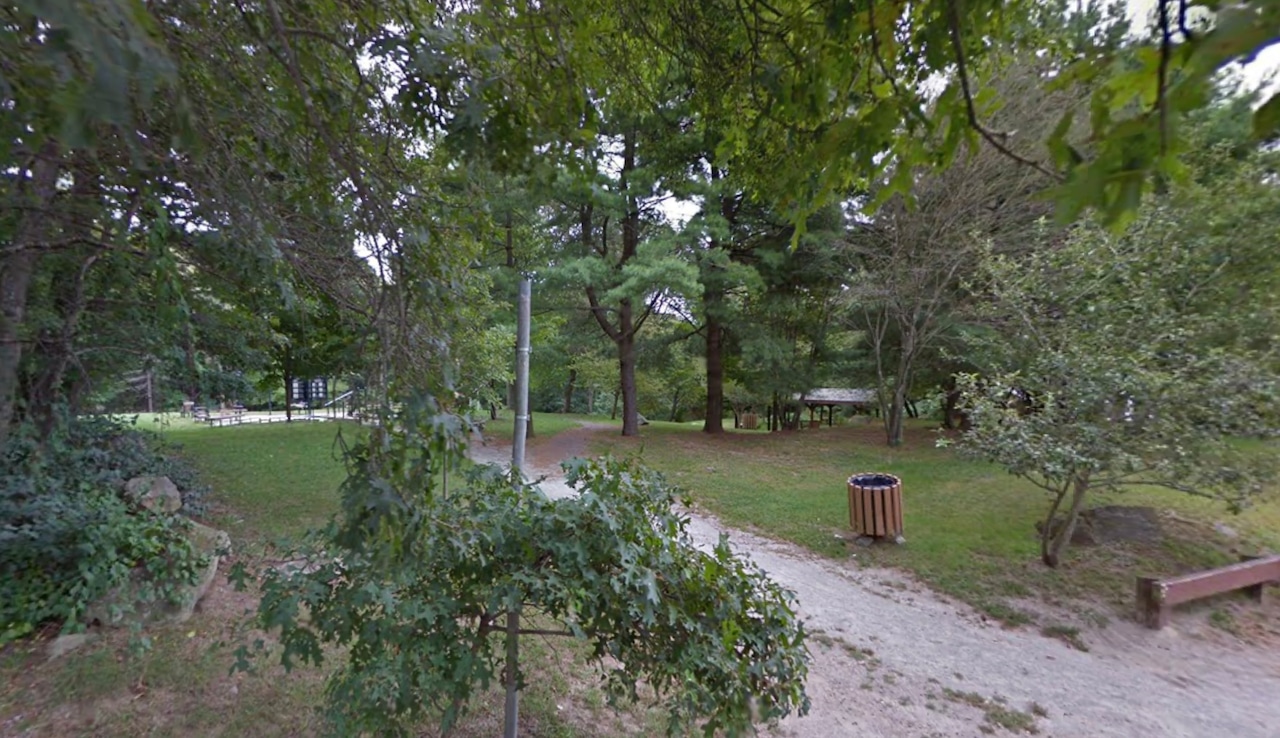As wildfires scorch California and Massachusetts recovers from its historic increase in fires just two months ago, the question of whether a similar disaster could happen on this coastline looms — and whether or not the Bay State is ready.
Last October, Massachusetts saw a staggering 1,200% increase in wildfires across the state that continued into November and burnt a total of about 4,000 acres.
While in California, wildfires have burned over 40,000 acres in under two weeks. Entire neighborhoods have been leveled and at least 24 people have been killed as of Jan. 15, according to reports from Cal Fire.
“It’s bringing up these feelings from a couple of months ago when we experienced our own wildfire on a very, very different scale,” said Northampton Mayor Gina Louise-Sciarra, whose city faced an eight-day, 52-acre blaze at its Fitzgerald Lake Conservation Area at the start of November.
Could fires of the same magnitude as those in California ever happen in Massachusetts? The state’s Fire Warden said “absolutely.”
“Even in an area where you feel like you would never have an issue with a wildfire, anything is possible under the right conditions,” said David Celino, Massachusetts State Fire Warden.
However, preparation for wildfires is handled at the municipality level in Massachusetts.
With California’s ongoing disaster and this past fall’s statistics, a wake-up call may have been sounded for Bay State’s town leaders to get their resources in order, Celino said.
“The beauty of this fall’s fire season is that everybody got sort of a heads-up … [to start thinking], ‘It would behoove us to really up our game and training so that we’re prepared,’” Celino said.
How prepared are the towns?
With a loss of 442 acres in just 24 hours on Mount Gilead, the Lynn wildfires last fall threatened properties and caused air quality issues. It was one of the most significant fires seen across the state in the drought period, and it had a “real possibility” of escaping its borders into the community, Celino said.
Lynn was previously approved a grant for fire preparation funding by the Department of Conservation and Recreation (DCR) through its Bureau of Forest Fire Control in January 2024, according to Mayor Jared Nicholson.
Now, in “a broader, more comprehensive effort” led by the city’s fire department, Nicholson hopes to sign another grant for forest fire safety through the Department of Agriculture at the end of February.

A Blackhawk helicopter flown by a member of the 126th Aviation Regiment of the Massachusetts National Guard picks up a load of water on Nov. 3, 2024. The helicopter was conducting water drops in Northampton and Montgomery in an effort to battle wildfires there, and it was drawing water from Fitzgerald Lake and the Westfield Reservoir. (Sgt. 1st Class Steven Eaton / Massachusetts National Guard)Massachusetts National Guard
The grant would help produce a “community wildfire defense plan,” Nicholson explained, for the city’s fire department, park ranger, department of public works and its “urban forestry fellow” to prepare for and respond to wildfires while managing community risk.
In Salem, there were two separate fires in October 2024 — one that burned 172 acres between Spring Pond and Highland Avenue and another burned 14 acres on the other side of Highland Avenue in Salem Woods. These damaged one garage at a camping ground, Mayor Dominick Pagnallo said, and residents complained of smoke for multiple days.
As the city approaches its 400th anniversary in 2026, Pagnallo said it looks to invest in infrastructure that supports a functioning and safe community.
That also means “investing in our historic preservation in the face of a change in climate,” Pagnallo said. Since at least 2021, Salem has hosted an annual “Preservation and a Changing Climate” conference, which focuses on the intersection of historic preservation, sustainability, and resilience for the city’s neighborhoods, buildings, documents and other materials.
As of January, the Salem Fire Department and town leadership are “trying to learn from the work” done in October to put out the fires, Pagnallo said. This includes some lessons from mutual aid departments like the DCR and Massachusetts National Guard who arrived with “fresh fire equipment and forest fire equipment.”
Additionally, while already responsive, the fire department is looking to be “flexible and responsive to the challenges we’re facing as a coastal community,” by having members with “backgrounds (in) urban forestry and forest firefighting,” Pagnallo said.
Difficult-to-reach locations for firefighters are something Revere has also prepared for, said Mayor Patrick Keefe, especially with its Oak Island area that received an updated water system after a failure during a brush fire two years ago.
And in Northampton, where a big challenge with its Fitzgerald Lake fire last fall was its remote location, Louise-Sciarra is looking into whether her fire department can get their hands on all-terrain-vehicles (ATV) like the ones their mutual aid partners brought in.
“I’m grateful we have access to resources if we need them from other communities, but I’m looking at whether there’s anything that we should have in our equipment that would make accessing, preventing or subduing fires quicker and easier for us,” Louise-Sciarra said.
How are wildfires different in other states?
While Massachusetts and California have different conditions and “fuel types,” or causes of fire ignition, Celino said the Bay State still has the potential for severe and dangerous wildfires, as shown by history and recent events.
He gave the example of a severe fire in Plymouth from 1957, which ravaged 15,000 acres and reached the ocean in less than 12 hours. Additionally, a fire driven by drought conditions in 2020 was contained at 20 acres but threatened the Pigeon Cove area of Rockport.
And while both California and Massachusetts have “leaf litter” that can fuel fires, the topography of Massachusetts doesn’t affect fire behavior the way California’s canyons and other features do, according to Celino.
Massachusetts’ wind patterns can be influential, Celino said, as they were predicted to be potentially catastrophic in the Lynn fire. But the difference in the West Coast winds and its bushy plants are other factors that influence and set apart its fires from those on the East Coast.
Still, with the right combination of Massachusetts’ fuel types — leaf litter, drought seasons, high heat and wind — there’s room for disaster, Celino said.
That’s why being prepared is so important, a notion the towns appear to have taken seriously, he said.
“The local fire departments really learned a lot from this and it will increase training for them,” Celino said, adding his state agency has received training requests from departments in recent months.
Last year’s fires pushed leaders to “prop up our knowledge, vision and preparedness for the next time,” Celino said, because “we know that there probably will be a next time.”






